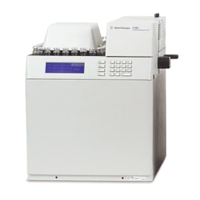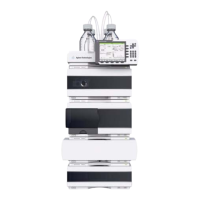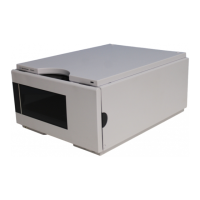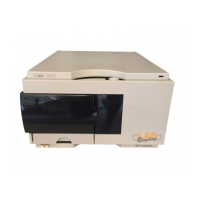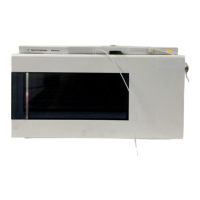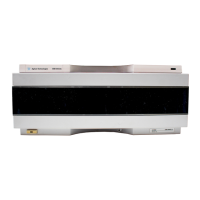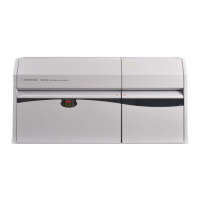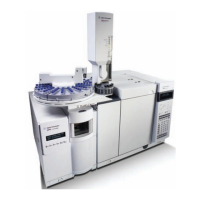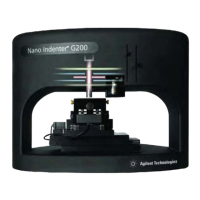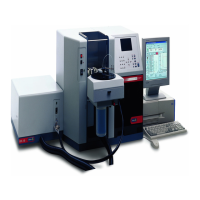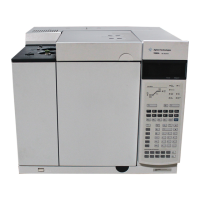Entering a Method
Chaining Methods
65
The method stored in the specified location is now available for current use.
Note A method may not be loaded during a run.
Chaining Methods
Chain Methods allows two to four stored methods to be used sequentially to
run groups of samples. It provides the user with some automation. Once the
chain (or sequence) is programmed in and the samples loaded, the sampler will
run the sequence without further operator intervention. Method chaining is
also a means of performing multiple headspace extraction (MHE).
Activate a Method Chain
To activate a method chain:
1. Press Chain Methods. The display reads as follows:
METH #’s
2. Press a method number {1-4}. A flashing * appears on the display followed
by the method number chosen.
3. Key in the method sequence in the order to be run.
4. Press Enter. The following flashing message is displayed:
METH CHAIN ON
Methods are run in order from left to right on the display. For example, keying
in the following:
2 4 1 3 Enter
would have the sampler run method two, followed by method four, then
methods one and three.
Press Chain Methods again to display the current chain sequence. This
method sequence is active until you edit it or press Load Method.
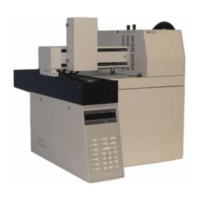
